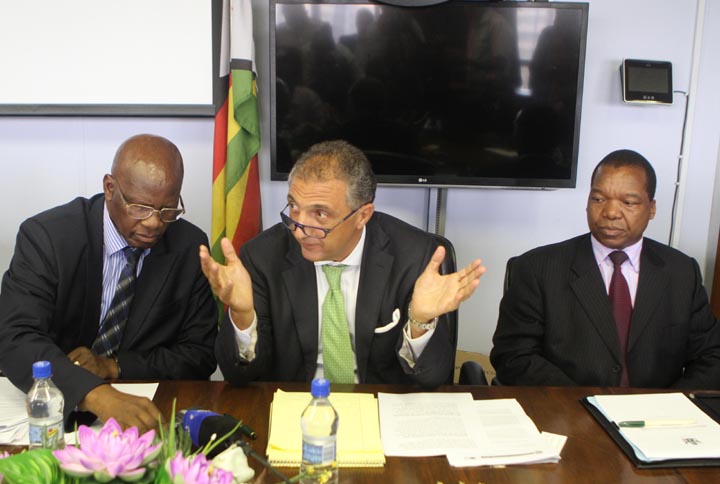Zimbabwe will register negative economic growth of -0.3 percent in 2016 and -2.5 percent in 2017, the International Monetary Fund has projected, confirming the end of a seven-year rebound from a decade-long recession.
The forecast, made in the latest IMF World Economic Outlook for October 2016, would see Zimbabwe recording its first gross domestic product contraction since 2008, when the economy shrank by 16.5 percent at the height of a hyperinflation crisis.
Zimbabwe’s economy grew by an average 10.35 percent between 2009 and 2012 after dollarisation and under a power-sharing government set up by long-ruling President Robert Mugabe and the opposition.
Growth started tapering off after Mugabe and his ZANU-PF party’s re-election in a 2013 vote disputed by the opposition.
Last month, Finance Minister Patrick Chinamasa revised Zimbabwe’s 2016 growth forecast from 2.7 percent to 1.2 percent, citing the impact of a devastating drought on the anchor agricultural sector, weak mineral prices, low foreign direct investment, a liquidity crisis and the attendant declining domestic demand.
Zimbabwe is the only Southern African Development Community (SADC) economy seen contracting this year, although regional powerhouses South Africa and Angola remain sluggish, and is just one of six contracting economies in sub-Saharan Africa, the IMF data shows.
Other regional economies projected to register negative growth are strife-torn South Sudan (-13.1 percent), Burundi (-0.5 percent) and Chad (-1.1 percent) as well as oil-dependent Equatorial Guinea (-9.9 percent) and Nigeria (-1.7 percent).
Global growth is projected to slow to 3.1 percent in 2016 (2015: 3.2 percent) before recovering to 3.4 percent in 2017. The forecast, revised down by 0.1 percentage point for 2016 and 2017 relative to April, reflects a more subdued outlook for advanced economies following the June U.K. vote in favor of leaving the European Union (Brexit) and weaker-than-expected growth in the United States.
Growth in emerging market and developing economies is expected to strengthen slightly in 2016 to 4.2 percent after five consecutive years of decline, accounting for over three-quarters of projected world growth this year. However, the outlook for these economies is uneven and generally weaker than in the past. While external financing conditions have eased with expectations of lower interest rates in advanced economies, other factors are weighing on activity.
These include a slowdown in China, whose spillovers are magnified by its lower reliance on import- and resource-intensive investment; commodity exporters’ continued adjustment to lower revenues; spillovers from persistently weak demand in advanced economies; and domestic strife, political discord, and geopolitical tensions in several countries.
While growth in emerging Asia and especially India continues to be resilient, the largest economies in sub-Saharan Africa — Nigeria, South Africa, Angola — are experiencing sharp slowdowns or recessions as lower commodity prices interact with difficult domestic political and economic conditions.-The Source
(239 VIEWS)
